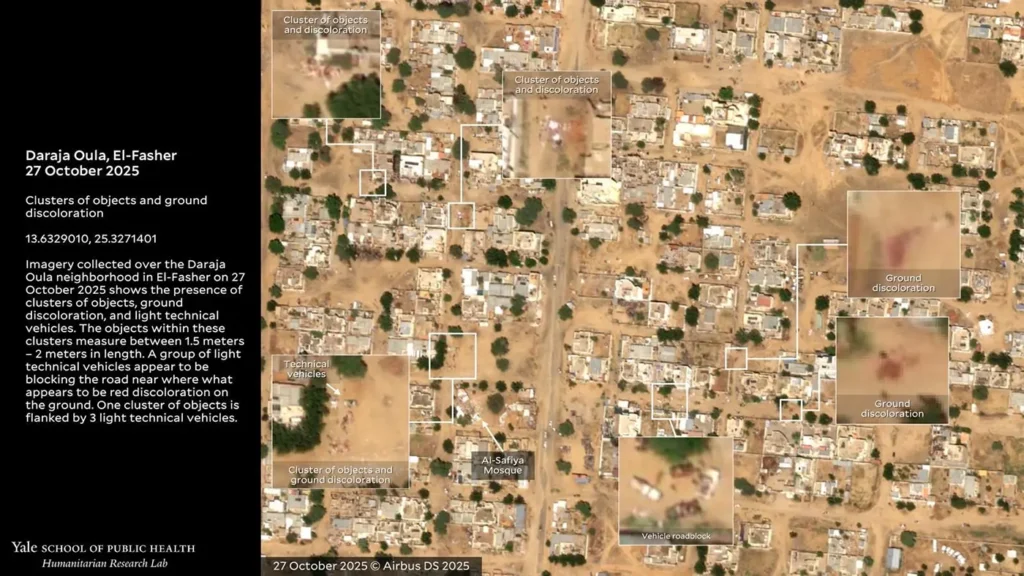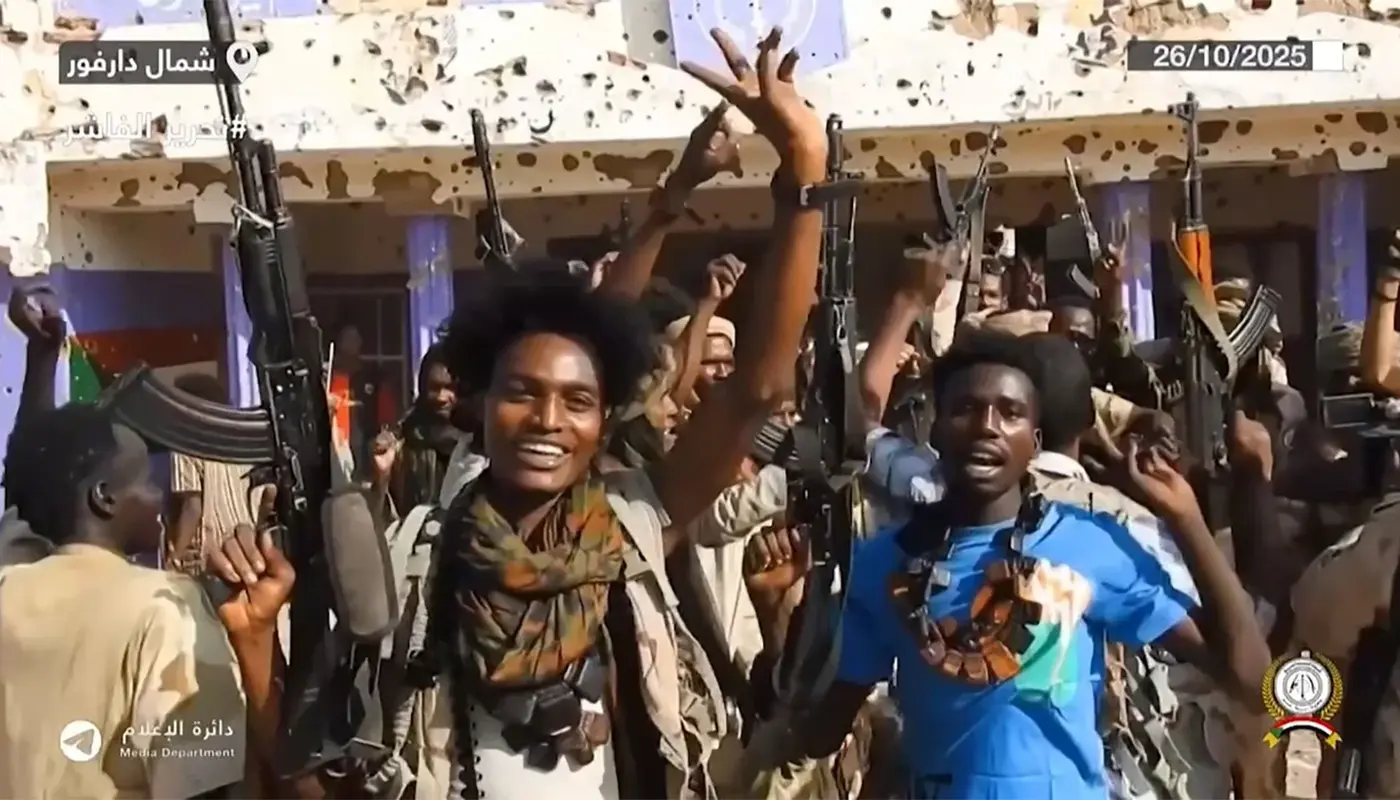Satellite imagery has revealed harrowing evidence of mass killings in El-Fasher, North Darfur, where the Rapid Support Forces (RSF) are accused of carrying out large-scale massacres against civilians.
The images, analysed by Yale University’s Humanitarian Research Lab (HRL), show vast reddish-brown stains on the ground, consistent with dried blood, alongside objects resembling human bodies.
The findings come amid reports of extrajudicial executions and widespread violence following the RSF’s capture of El-Fasher on 26 October.
According to HRL, at least three of the visible objects measured between 1.3 and 2 metres, dimensions consistent with human remains.
The satellite evidence corroborates multiple eyewitness accounts and social media reports describing mass killings across the city.
India Today reported that imagery from the Darja Oula neighbourhood displayed clusters of light and dark objects resembling corpses, alongside ground discolouration.
The scale of the killings is so vast that the aftermath is visible from satellites, a chilling testament to the brutality of the conflict.

The RSF, a paramilitary group with roots in the Janjaweed militias accused of atrocities during the Darfur conflict two decades ago, has been engaged in a civil war with Sudan’s army since April 2023.
The battle for El-Fasher marked a significant escalation, as the city had been one of the army’s last strongholds in Darfur.
Reports suggest that thousands of civilians may have been killed during the RSF’s advance. Israel Hayom cited estimates of more than 2,000 deaths, with satellite images showing piles of bodies and pools of blood across the city.
Despite a communications blackout imposed by the RSF, disturbing details have continued to emerge through satellite monitoring and survivor testimonies.
The humanitarian toll is staggering. Sudan’s civil war has already displaced millions and left nearly 30 million people in urgent need of aid, according to international agencies.
The United Nations has repeatedly warned of ethnic cleansing and potential genocide in Darfur, urging the international community to act.
“The sheer visibility of this massacre from space underscores the scale of the atrocity,” HRL researchers stated, adding that the evidence provides a rare and undeniable record of crimes committed despite attempts to suppress information.
As global attention remains fragmented, Sudan’s crisis risks being overshadowed by other conflicts. Yet the images from El-Fasher serve as a stark reminder of the urgency for international intervention to prevent further atrocities.
Sources: Middle East Eye




